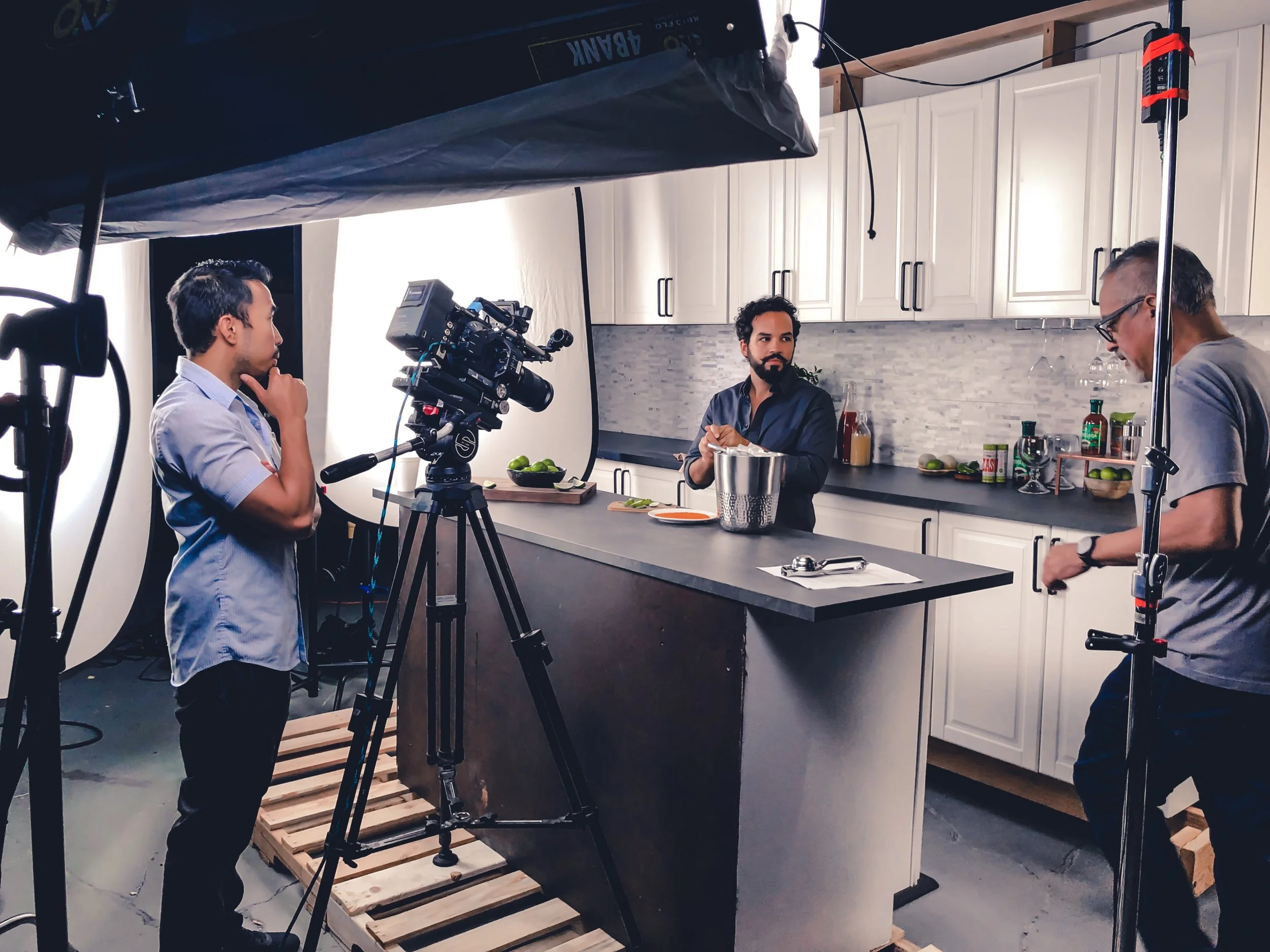Want to know how you can create creative shots with your camera? Moving your camera up and down, side to side or other camera movements does wonders for your scene and video production. The camera shots and movements you choose help to convey the mood and context of the scene. Want your audience to know a detail hidden in the background or know the significance of the primary location of your video; then using camera movements such as pans and tilts, dolly and tracking shots, and crane shots will assist in narrating your story. Play around with the basic camera movements mentioned in this clip from our video content course to decide which ones you want to incorporate for your next video shoot.
Types of Shots
Need ideas on how to make your story flow through your camera shots? Experiment with these types of shots to help convey your character’s perspectives and emotions in the shot. Add more creativity and thought to your camera shots through the use of pans and tilts, dolly and tracking shots, and crane shots. In this clip from our video content course, we demonstrate and explain the camera shot types mentioned above.
Aspect Ratios In Social Media
As a filmmaker in the modern era, it’s crucial to promote your content on various social media platforms. But you may notice that the way video appears differs between platforms. For example, YouTube displays video as a rectangle, while Instagram is more square-shaped. This is because of a video’s aspect ratio. There are multiple aspect ratios out there, and it can be confusing to keep track of which platform has which aspect ratio. We’re here to help you with exactly that.
So first of all, what exactly is an aspect ratio? Aspect ratio is a ratio of the width to the height of an image. So an image with an aspect ratio of 1.79 to 1, or 16 to 9, will be longer than an image with an aspect ratio of 1 to 1, which will be a perfect square.
1 - 16:9. The 16:9 is the rectangular aspect ratio you have likely seen more than any other. The platforms that use 16:9 include Facebook, Youtube, Twitter, and Linkedin.
2 - 9:16. The 9:16 aspect ratio is designed to roughly fit the size of the average smartphone. Sometimes 16:9 videos are put in a 9:16 aspect ratio, with the rest of the space being filled with colour, text, or graphics. Platforms that use 9:16 are Snapchat, Instagram (IGTV), Tiktok, Pinterest and Facebook (Stories).
3 - 1:1. The 1:1 aspect ratio is, as its name would suggest, a perfect square. Platforms that use it include Instagram (Thumbnails) and Facebook.
4 - 4:5. The 4:5 aspect ratio is slightly bigger (taller) than the 1:1 aspect ratio. Platforms that use it include Instagram and Facebook.
7 Basic Shot Sizes in Filmography
What do you think about when you watch close-up shots? Is it the emotion the character is feeling? What about wide shots? Are you providing context to your scene? It is important to use any of these 7 basic shot sizes in your film as they can come up in the beginning, middle, or end of your scene. Invoke the same powerful message through different shots by using our list and examples from famous films.
Framing is a lot of effort. It can be hard to decide exactly how much you want in any given frame, and we're here to help you by explaining the 7 basic shot sizes, what they show, and their purposes.
Extreme Long Shot (ELS): Extreme long shots are often used as the first shot of a scene to establish the setting the scene will take place in. The characters may not be shown at all in ELS’s, and even if they are, the focus is overwhelmingly placed on the environment.
Long Shot (LS): Also known as a wide shot, the long shot shows the characters in full from head to toe, allowing for extensive body movement. A large part of the focus is still placed on the environment, but more is now placed on the characters.
Medium Long Shot (MLS): Medium long shots show the characters from approximately knees and up, still showing most of the body, which allows for some body movement.
Medium Shot (MS): Showing characters from around the waist and up, the medium shot now places focus primarily on the characters. Body movement is more restrictive, but as the shot is closer to the subject, facial expressions are more prominent. Very little focus is placed on the environment.
Medium Closeup (MCU): The medium closeup is now almost entirely focused on the subject’s face, showing only the shoulders and potentially parts of the torso aside from the face. Body movement, aside from the shoulders, is extremely limited as nearly all the focus is on the face.
Closeup (CU): The closeup is focused entirely on the subject’s face and nothing else, making body movement nonexistent.
Extreme Closeup (ECU): In an extreme closeup, only a certain aspect of the face, often the eyes, has focus. The ECU can also be used to focus on a specific object in a scene.
